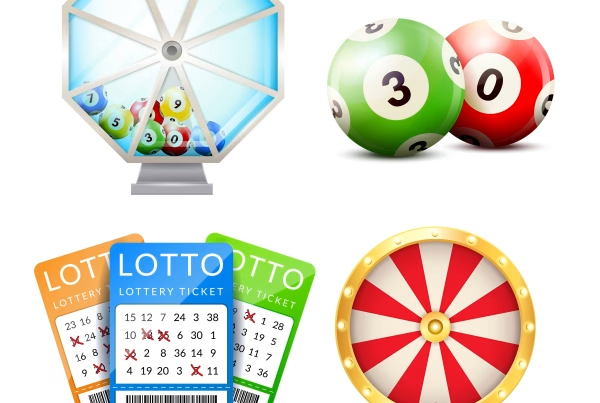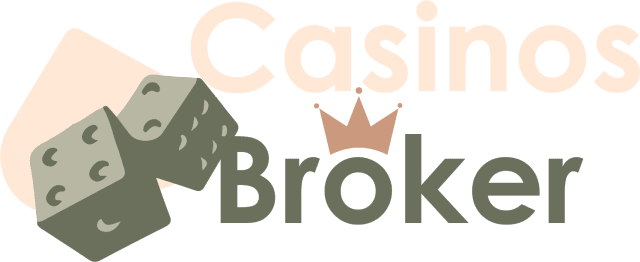The digital gaming ecosystem comprises three distinct sectors – eGaming, Esports, and iGaming – each characterized by unique business models, regulatory frameworks, and growth trajectories. For investors, operators, and strategic acquirers evaluating opportunities in this space, understanding these distinctions is essential to assessing valuation, risk profile, and integration complexity.
While market participants often conflate these terms, their operational and commercial differences create fundamentally different investment theses. iGaming’s regulatory intensity and proven monetization drive premium valuations but require sophisticated compliance infrastructure. Esports offers high growth and demographic appeal but faces monetization challenges and evolving business models. eGaming provides scale and technological innovation but operates in highly competitive, hits-driven markets.
This analysis examines the structural characteristics of each sector, their convergence trends, and the strategic implications for M&A activity.
Sector Definitions and Business Model Characteristics
eGaming: Entertainment-Driven Gaming
eGaming encompasses electronic gaming for entertainment purposes, representing the broadest and most established segment. Revenue derives from software and hardware sales, subscription services (e.g., Xbox Game Pass, PlayStation Plus), and in-game microtransactions. The sector generated approximately $187 billion globally in 2024, with mobile gaming accounting for $92 billion (49%), underscoring the importance of mobile-first development strategies.
From an M&A perspective, eGaming targets are valued on traditional media and entertainment metrics; user engagement, IP portfolio strength, and platform stickiness. Acquirers typically seek proprietary technology, established user bases, or hit franchises that can be monetized across multiple platforms and geographies.
Esports: Competitive Gaming with Prize Structures
Esports refers to organized, competitive video gaming featuring professional players, teams, and structured tournaments. The sector’s $4.8 billion market size (2025) reflects a 5.56% CAGR trajectory toward $5.9 billion by 2029. Revenue streams include sponsorships, media rights, merchandise, ticket sales, and increasingly, betting integration.
The Esports value proposition centers on audience engagement rather than direct consumer spending. Major tournaments; such as the 2025 Esports World Cup with its $27 million prize pool; attract substantial viewership via platforms like Twitch and YouTube, creating valuable advertising inventory. However, monetization per user remains lower than in iGaming, creating margin pressure that strategic acquirers must address through operational leverage or cross-platform synergies.
iGaming: Real-Money Wagering and Online Gambling
iGaming represents online gambling activities where players wager real money on outcomes; encompassing online casinos, sports betting, poker, and live dealer games. The sector’s scale dwarfs Esports, with a 2024 market size of $78.66 billion projected to reach $153.57 billion by 2030 (11.9% CAGR).
iGaming’s business model relies on player deposits and house edge economics, generating high-margin, recurring revenue. However, this comes with significant regulatory complexity. Licensing requirements, anti-money laundering compliance, responsible gaming obligations, and geographic restrictions create substantial barriers to entry; and corresponding valuation premiums for licensed, compliant operators.
For acquirers, iGaming targets require exhaustive regulatory due diligence, including license transferability analysis, jurisdiction-specific compliance review, and assessment of potential regulatory changes that could impair future earnings.
 Convergence Dynamics: Esports Betting and Gamification
Convergence Dynamics: Esports Betting and Gamification
Two key trends are blurring traditional sector boundaries, creating both opportunity and complexity for dealmakers:
Esports Betting Integration
The $2.8 billion Esports betting market represents a critical convergence point. Traditional sportsbooks are adding Esports markets (match winners, in-game events, fantasy competitions) to attract younger demographics, while Esports platforms are integrating betting functionality to enhance monetization. This creates strategic rationale for cross-sector acquisitions; iGaming operators seeking audience diversification and Esports companies pursuing higher-ARPU business models.
However, regulatory ambiguity presents material risk. While Esports itself faces minimal regulation, betting integration triggers gambling licensing requirements, compliance obligations, and potential age-restriction enforcement challenges. Acquirers must model multiple regulatory scenarios and assess the target’s readiness for heightened oversight.
Gamification in iGaming
iGaming operators are adopting eGaming engagement mechanics; loyalty programs, achievement systems, tournaments, and leaderboards, to improve player retention and reduce churn. This trend has spawned social casinos, which replicate gambling experiences without real-money wagering, circumventing regulatory restrictions in certain jurisdictions while building user bases for potential future monetization.
For strategic buyers, gamification capabilities represent a defensible competitive advantage in increasingly saturated markets. Targets with proprietary engagement technology or proven retention metrics command premium valuations.
 Technology Infrastructure and Platform Consolidation Opportunities
Technology Infrastructure and Platform Consolidation Opportunities
Despite sectoral differences, all three verticals depend on common technology infrastructure, creating opportunities for vertical integration and platform-level M&A:
- Live Streaming: Critical for Esports tournament broadcasting, live dealer games in iGaming, and content marketing across eGaming. Platforms capable of handling high-bandwidth, low-latency streaming at scale possess strategic value.
- Blockchain and Cryptocurrency: Adoption is accelerating across all sectors for payment processing, particularly in jurisdictions with restrictive banking regulations. Blockchain also enables transparency in game outcomes, smart-contract-based prize distribution, and NFT integration. Acquirers increasingly value targets with demonstrated blockchain integration capabilities.
- Mobile Optimization: With mobile representing 49% of gaming revenue, responsive design, native app development, and optimized user experiences on smaller screens are non-negotiable. Targets lacking mobile-first architectures face significant integration costs post-acquisition.
- Artificial Intelligence: AI applications span personalized content recommendations, dynamic pricing and bonus optimization in iGaming, anti-fraud detection, and procedural content generation in game development. AI capabilities increasingly drive valuation premiums, particularly for B2B platform providers.
Technology platform providers serving multiple sectors; payment processors, streaming infrastructure, analytics platforms, white-label solutions, represent attractive consolidation targets given their cross-sector exposure and recurring B2B revenue models.
Regulatory and Compliance Considerations in M&A
Regulatory complexity represents the single largest differentiator in deal structuring and valuation across these sectors:
iGaming: Heavily regulated with jurisdiction-specific licensing requirements, often non-transferable without regulatory approval. Acquirers must assess license portability, ongoing compliance costs, beneficial ownership restrictions, and potential regulatory changes. Transactions frequently include regulatory approval conditions precedent, extended closing timelines, and earnout structures tied to license retention.
Esports: Largely unregulated beyond general consumer protection and content standards, though betting integration triggers gambling regulations. Tournament integrity and anti-match-fixing measures are emerging regulatory concerns, particularly as institutional investment increases. Forward-looking acquirers must assess regulatory risk as the sector matures.
eGaming: Minimal gambling-related regulation, though subject to content ratings, data privacy laws (GDPR, CCPA), and age-appropriate content standards. Regulatory risk is lower, but IP infringement, platform terms-of-service compliance (for mobile games), and data security remain material diligence items.
Audience Demographics and Customer Acquisition Strategy
Target demographics vary significantly across sectors, influencing customer acquisition costs, lifetime value, and strategic positioning:
- eGaming: Broad demographic appeal spanning all ages, with family-friendly content creating wide market access but potentially lower monetization intensity.
- Esports: Concentrated among younger, tech-savvy audiences (18-34) in established gaming cultures (North America, Europe, Asia). High engagement but monetization challenges require innovative approaches beyond traditional advertising.
- iGaming: Restricted to legal-age adults (18-21+ depending on jurisdiction), with millennials and boomers representing core demographics. Higher disposable income and wagering propensity drive superior unit economics but increase regulatory scrutiny.
For acquirers pursuing cross-sector strategies, demographic alignment is critical. iGaming operators targeting Esports companies must carefully evaluate whether betting integration will alienate core audiences or damage brand equity; missteps can destroy acquisition value.
Market Size, Growth Rates, and Valuation Implications
The substantial difference in market scale and growth rates between iGaming and Esports creates distinct risk-return profiles:
- iGaming: $78.66B (2024) → $153.57B (2030) at 11.9% CAGR represents a mature, large-scale market with proven monetization. Valuation multiples typically range from 8-15x EBITDA for established operators, with premiums for multi-jurisdictional licenses and proprietary technology.
- Esports: $4.8B (2025) → $5.9B (2029) at 5.56% CAGR reflects a growth-stage market still establishing sustainable business models. Valuations often focus on revenue multiples (given limited profitability) or strategic premiums based on audience value and IP rights.
- eGaming: $187B (2024) with mobile at $92B reflects a massive, competitive market where scale, IP, and platform dominance drive valuations. Public market comparables (e.g., Activision Blizzard, Electronic Arts) trade at 15-25x P/E ratios, though individual transaction multiples vary widely based on franchise strength and growth trajectory.
Strategic buyers may justify premium valuations based on synergies unavailable to financial sponsors; audience cross-pollination, technology integration, licensing leverage, or geographic expansion. Financial sponsors typically focus on cash-generative iGaming assets with predictable earnings, lower regulatory risk, and clear paths to operational improvement.
 Risk Factors and Social Responsibility Considerations
Risk Factors and Social Responsibility Considerations
Both reputational risk and emerging regulatory focus on responsible gaming create material considerations for acquirers:
- Addiction and Player Protection: All three sectors face scrutiny regarding addictive mechanics, with iGaming bearing the greatest regulatory burden. Acquirers must assess targets’ responsible gaming policies, self-exclusion systems, and potential exposure to regulatory action or litigation.
- Age Verification and Minor Protection: Particularly critical for iGaming and any Esports platform integrating betting. Inadequate age verification creates regulatory risk, potential fines, and license revocation exposure.
- Unscrupulous Operators: Market fragmentation and jurisdictional arbitrage enable bad actors, particularly in less-regulated markets. Thorough commercial and operational due diligence is essential to avoid acquiring businesses with problematic practices that create post-acquisition liability.
- ESG Considerations: Institutional investors increasingly evaluate gaming investments through ESG frameworks, with responsible gaming practices, data privacy, and player protection as key criteria. Targets with strong ESG profiles may access lower-cost capital and command valuation premiums.
Future Outlook: Technology-Driven Convergence and New Business Models
Emerging technologies are accelerating sector convergence and creating new M&A opportunities:
- AR/VR Integration: Immersive gaming experiences are blurring lines between eGaming entertainment and real-money gambling, potentially creating hybrid product categories that challenge existing regulatory frameworks.
- AI-Driven Personalization: Machine learning enables dynamic content, personalized bonus structures, and predictive engagement tools applicable across all sectors, making AI capabilities increasingly valuable in acquisitions.
- Blockchain-Based Gaming: Decentralized gaming platforms, play-to-earn models, and NFT integration create new business models that combine elements of all three sectors; entertainment (eGaming), competition (Esports), and financial incentives (iGaming-adjacent).
- Social Casino Evolution: Social casinos represent a regulatory arbitrage play, offering gambling-style entertainment without real-money wagering. As regulatory frameworks evolve, these platforms may either gain pathways to monetization or face increased restrictions; creating both opportunity and risk.
Strategic Implications for M&A Activity
For investors and operators evaluating opportunities in digital gaming, several strategic considerations emerge:
- Regulatory Due Diligence is Paramount: iGaming transactions require sophisticated legal and compliance review, with regulatory approval often representing the most significant closing risk. Engage regulatory counsel early and model multiple approval scenarios.
- Technology Infrastructure Creates Value: Platforms with scalable, cross-sector technology (payments, streaming, mobile, AI) command premiums and offer integration synergies. Consider bolt-on technology acquisitions to enhance core platform capabilities.
- Demographic Synergies Drive Cross-Sector Deals: iGaming operators seeking younger demographics may pursue Esports assets, while Esports companies chasing monetization may target iGaming platforms. Success requires cultural sensitivity and brand protection to avoid alienating core audiences.
- Market Access and Licensing are Strategic Assets: In iGaming, multi-jurisdictional license portfolios create substantial value. Esports companies with exclusive tournament rights or game publisher relationships possess similar strategic moats.
- Mobile-First is Non-Negotiable: With mobile representing half of gaming revenue, targets lacking mobile optimization require significant post-acquisition investment. Mobile capability should be a go/no-go diligence criterion.
- Monitor Regulatory Evolution: Esports betting’s regulatory status remains fluid. Acquirers must model potential regulatory scenarios and assess targets’ ability to adapt to heightened oversight.
Conclusion
Esports, iGaming, and eGaming represent distinct sectors with fundamentally different business models, regulatory profiles, and growth trajectories. While technological infrastructure and evolving business models are driving convergence, material differences remain, particularly regarding regulation, monetization, and target demographics.
For M&A practitioners, success requires understanding not only each sector’s unique characteristics but also the strategic rationale for cross-sector transactions. iGaming’s proven economics and regulatory complexity demand sophisticated compliance infrastructure and exhaustive due diligence. Esports’ growth potential and demographic appeal must be balanced against monetization challenges and evolving business models. eGaming’s scale and innovation require assessment of IP strength, platform stickiness, and competitive positioning.
As technology continues to blur traditional boundaries; through Esports betting, gamification, blockchain integration, and immersive experiences, strategic acquirers capable of navigating regulatory complexity while capturing cross-sector synergies will be best positioned to create value in this dynamic, high-growth ecosystem.





